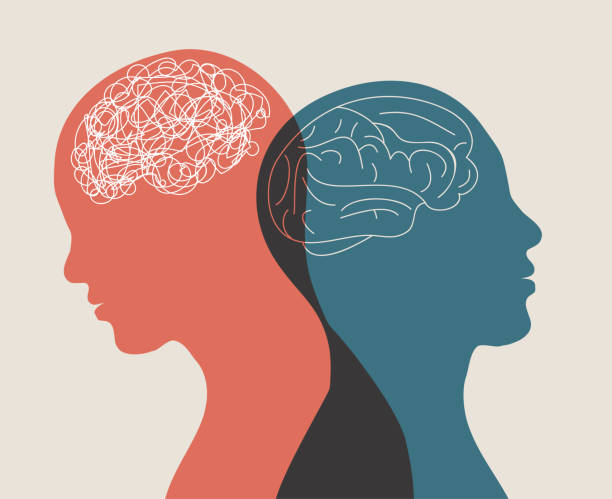Introduction
Picture this: a witness points across the courtroom and says, “That’s the man who did it.” The jury nods. The judge listens. And someone’s fate is sealed.
But what if that memory is wrong?
It happens more than we think.
Eyewitness testimony has long been considered the gold standard of criminal evidence. But psychology tells a more troubling story: our memories are not video recordings—they’re fragile, flawed, and frighteningly malleable.
From mistaken identities to imagined events, the science of memory reveals just how easy it is to lie under oath…without even realizing it.
Eyewitness Testimony
For centuries, eyewitness accounts have been pivotal in courtrooms. Jurors often see confident eyewitnesses as highly credible even when there’s no physical evidence.
Yet, research shows that eyewitness misidentification is the leading cause of wrongful convictions in the U.S.
The Innocence Project
Over 70% of the 375 + DNA exonerations in the U.S. involved eyewitness errors (Innocence Project, 2023). In many cases, the witnesses were 100% certain and 100% wrong.
“There is almost nothing more convincing than a live human being who takes the stand, points a finger, and says, ‘That’s the one!’” – Elizabeth Loftus
But why do our brains betray us?
Memory
We like to think of memory as a mental camcorder. But it’s more like a Wikipedia page editable, and not always accurate.
Memory is
- Constructive: Our brains actively rebuild memories every time we recall them.
- Susceptible to interference, suggestion, and stress.
- A mix of facts, assumptions, and imagination.
Classic Experiment
- Loftus & Palmer (1974) showed participants videos of car crashes.
- When asked, “How fast were the cars going when they smashed into each other?” they gave higher speed estimates than when the word was “hit.”
- A week later, those in the “smashed” group were more likely to remember seeing broken glass even though there was none.

This demonstrates the misinformation effect: how subtle wording can alter memories.
The Problem with Lineups and Police Procedures
Much of eyewitness error stems from how identification is conducted.
Factors that distort memory
- Leading questions (“Was the man wearing a red hat?”)
- Lineup biases (suspect stands out due to appearance)
- Confirmation feedback (“Good job that’s who we thought it was!”)
Real Case
- In the Ronald Cotton case (North Carolina), Jennifer Thompson confidently identified him as her rapist. Years later, DNA proved it was someone else.
- She wasn’t lying. She believed it. Her memory had been shaped by suggestive police procedures.
Stress, Trauma, and the Fight-or-Flight Fog
One might assume that traumatic events get etched in our brains but research shows that extreme stress impairs memory consolidation.
- In high-stress situations (e.g., assaults, armed robberies), witnesses experience narrowed attention, known as “weapon focus” (Steblay, 1992).
- This leads to tunnel vision: people remember the gun clearly, but not the face.
Cortisol & Memory
Elevated stress hormones like cortisol interfere with the brain’s hippocampus—the region critical for memory encoding (De Quervain et al., 1998).
This means the very events where we need accurate memory the most… are the ones where memory is most unreliable.
Read More- Memory and PTSD
Confidence ≠ Accuracy
One of the most dangerous assumptions in courtrooms is that a confident eyewitness is a correct one.
But studies show:
- There is low correlation between confidence and accuracy (Wells & Bradfield, 1998).
- Post-identification feedback increases confidence, even when the ID is wrong.
In essence, witnesses can become more sure over time, even as their memory degrades—a phenomenon called memory inflation.
The Power of Suggestion and False Memories
Psychologist Elizabeth Loftus has demonstrated that people can be led to remember entirely false events like being lost in a mall as a child or even witnessing demonic possession (Loftus, 1997).
“Lost in the Mall” Study
- Participants were told a fabricated story about getting lost as a child.
- 25% came to believe it actually happened, adding their own details and emotions.

If false memories can be implanted with just a few conversations… imagine what repeated police questioning, media exposure, and stress can do.
Reforms
While we can’t change how memory works, we can improve how it’s handled in legal settings.
Reforms include
- Double-blind lineups: The officer doesn’t know who the suspect is.
- Sequential lineups: Viewing one person at a time, not all at once.
- Neutral instructions: No feedback or nudges.
- Video recordings of ID procedures for transparency.
Organizations like the Innocence Project advocate these changes, backed by decades of psychological research.
A Better Standard of Truth
So where do we go from here?
- Recognize that memory is malleable, not malevolent.
- Educate law enforcement, lawyers, and jurors on the limits of human memory.
- Treat eyewitness testimony as supporting, not sole, evidence.
Ultimately, the goal isn’t to eliminate eyewitnesses—but to view them through the lens of science, not assumption.
Conclusion
We all like to think our memories are faithful accounts of reality. But the truth is, our minds are more novelist than notary. They create stories that feel true even when they’re not.
In a justice system where life and liberty hang in the balance, we must be skeptical of even the most sincere-sounding witness. Not because they’re lying but because their brains are.
Eyewitnesses should have a voice in court but it should never be the final word.
References
De Quervain, D. J., Roozendaal, B., & McGaugh, J. L. (1998). Stress and glucocorticoids impair retrieval of long-term spatial memory. Nature, 394(6695), 787–790.
Innocence Project. (2023). Eyewitness misidentification. https://innocenceproject.org/eyewitness-identification-reform/
Loftus, E. F. (1997). Creating false memories. Scientific American, 277(3), 70–75.
Loftus, E. F., & Palmer, J. C. (1974). Reconstruction of automobile destruction: An example of the interaction between language and memory. Journal of Verbal Learning and Verbal Behavior, 13(5), 585–589.
Steblay, N. M. (1992). A meta-analytic review of the weapon focus effect. Law and Human Behavior, 16(4), 413–424.
Wells, G. L., & Bradfield, A. L. (1998). “Good, you identified the suspect”: Feedback to eyewitnesses distorts their reports of the witnessing experience. Journal of Applied Psychology, 83(3), 360–376.
Subscribe to PsychUniverse
Get the latest updates and insights.
Join 2,974 other subscribers!
Niwlikar, B. A. (2025, June 26). Half-Truths of Eyewitness Testimony and 4 Important Solutions to It. PsychUniverse. https://psychuniverse.com/half-truths-of-eyewitness-testimony/



